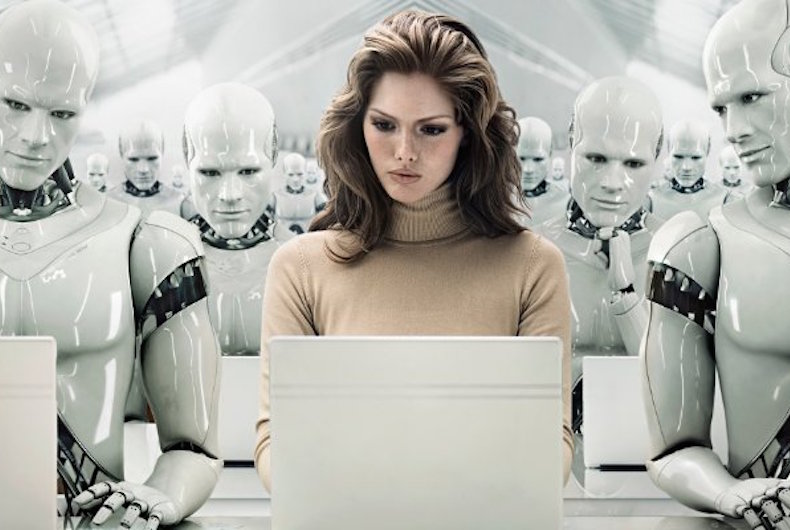 One of the key technology trends that we will get to see in 2017 is around Artificial Intelligence (AI) including chatbots. This seems to be the most common prediction by many agencies and companies. Cloud accounting software company, Sage, too has predicted that chatbots, collective intelligence and blockchain are some of the big technology trends that will change the way entrepreneurs run their businesses in 2017.
One of the key technology trends that we will get to see in 2017 is around Artificial Intelligence (AI) including chatbots. This seems to be the most common prediction by many agencies and companies. Cloud accounting software company, Sage, too has predicted that chatbots, collective intelligence and blockchain are some of the big technology trends that will change the way entrepreneurs run their businesses in 2017.
“As every business – big or small – is transforming more or less intensively into a tech-enabled business, today’s entrepreneurs should be on the lookout for the opportunities these technological developments can bring to their business,” said Klaus-Michael Vogelberg, Chief Technology Officer, Sage.
Mr Vogelberg sees six major trends in 2017 that could make a big difference to the way business builders will work in 2017 and beyond.
Trend #1: Chatbots & Autonomous Interfaces
Autonomous interfaces such as chatbots or digital agents will become increasingly common on different devices and user interfaces that entrepreneurs use to manage and control their businesses. These interfaces will dramatically change the way that humans and computers work and interact with each other. While, in the past, people used a keyboard or mouse to interact with their PCs, they will gradually start talking with their systems or using gesture control such as hand, head or eye gestures to interact with them.
Trend #2: Artificial & Collective Intelligence
Artificial and collective intelligence is another major trend to look out for, even for smaller companies. With mushrooming data volumes being generated by all sorts of sensors and devices on the one hand, and computer power and special analysis software and intelligent agents becoming increasingly affordable and powerful on the other, companies need to find ways to extract knowledge from today’s wealth of Big Data.
“If small and medium-sized enterprises (SMEs) join forces and – while considering their corporate data protection policies and personal rights laws – share, for example, computer power and data with other companies in a structured and systematic manner, they could profit from this collaboration by receiving a better and larger data pool and superior data intelligence,” added Mr Vogelberg.
Trend #3: Blockchain – Creating Trust In Digital Age
Business builders should also carefully analyze if, and how, the new blockchain technology could impact their current business models. Particularly all those industries which work as intermediaries between two parties – such as lawyers, notaries, or real-estate or financial brokers – could be affected by this new, innovative approach.
Trend #4: Revolutionizing The Movement Of Money
The way people use money and transfer their payments from one account to another has already changed dramatically: at the frontend, in-app payment solutions nowadays enable users to effortlessly make one-click payments and purchase goods via mobile devices or websites. This functionality is available in many apps today. In 2017, newer solutions will allow companies to establish an end-to-end payments value chain with their suppliers and customers. These solutions enable ubiquitous anytime anywhere, immediate and omni-channel payments and will be fully integrated into the financial accounting systems of tomorrow’s enterprises.
Trend #5: Platform-based Infrastructure
In 2017, more SMEs will replace their standalone, on-site software systems with integrated, cloud-based software solutions that operate on global cloud platforms such as Salesforce.com that are offering their users access to a wealth of business apps and integrated services.
Trend #6: New Services & Job Profiles Through Internet Of Things
SMEs should be on the lookout for new possibilities that emerge with the realization of the Internet of Things (IOT). Multiple data streams originating from all sorts of sensors built into e.g. machines, cars, mobile and immobile goods, clothes or even human beings (e.g. for medical monitoring purposes) will result in a true treasure trove of data, thus creating all sorts of new services.
Trend #7: SMEs Should Think About How To Use Data Streams To Grow
Mechanics will develop new services such as predictive maintenance for all sorts of technical infrastructures. Logistic companies will optimize e.g. the navigation of their truck fleets by using traffic data from many different sources including smart city data from traffic lights, streets or other vehicles. Retail companies and shop owners might connect to smart home devices such as refrigerators or Amazon-style dash buttons to supply customers automatically and predictively with goods and services. Mobile medical care services will innovate their work with the assistance of all sorts of new devices e.g. to improve their support of elderly people living alone at home.
“In 2017, every business will need to start thinking of itself as a technology business. To stay competitive, they will need to grasp the opportunities that this development brings with it and change almost every aspect of today’s more or less traditional ways of working. The good news is that this technology means that we believe that very soon, business admin could become completely invisible, as easy as messaging a friend, or even completely automated, as machines learn like humans,” concluded Mr Vogelberg.




